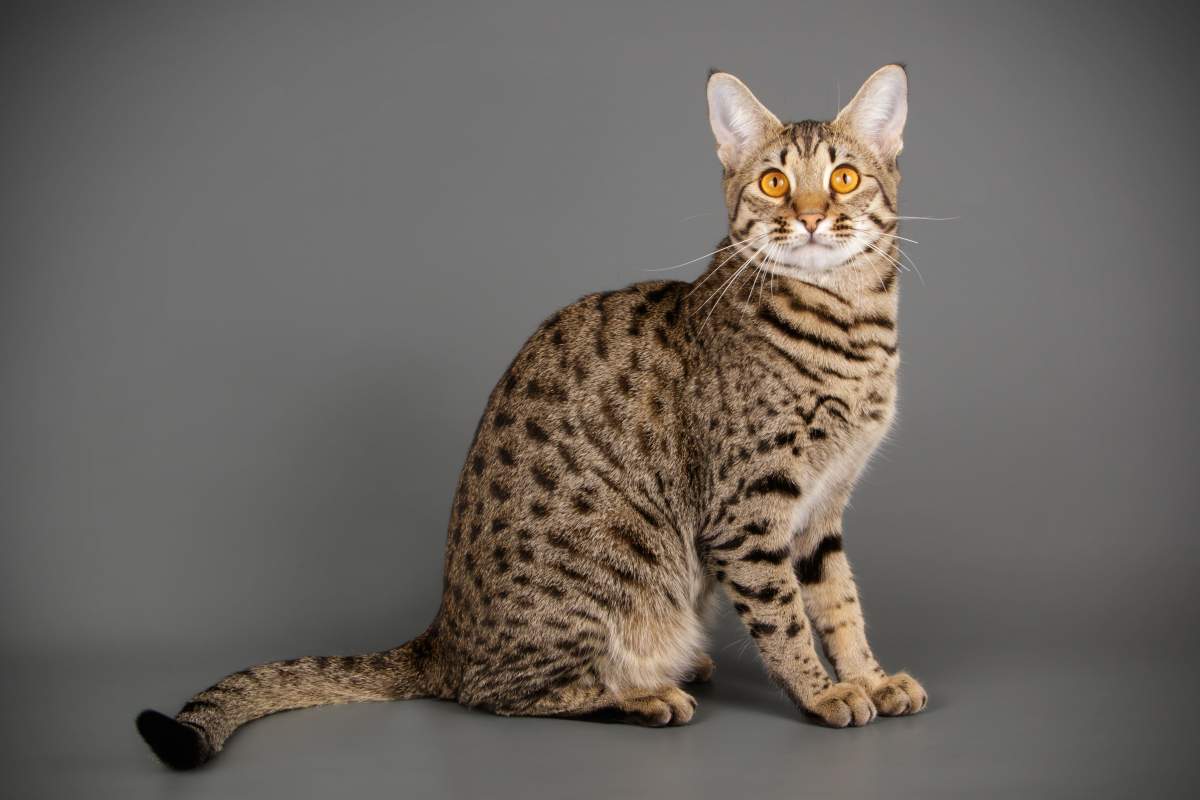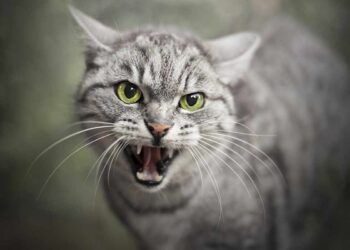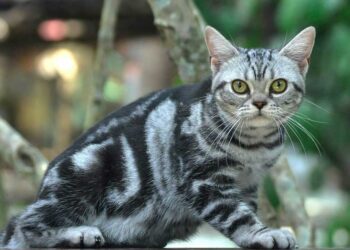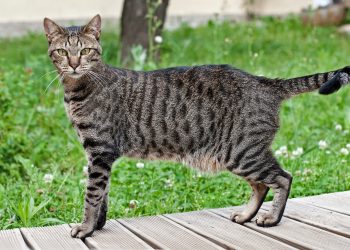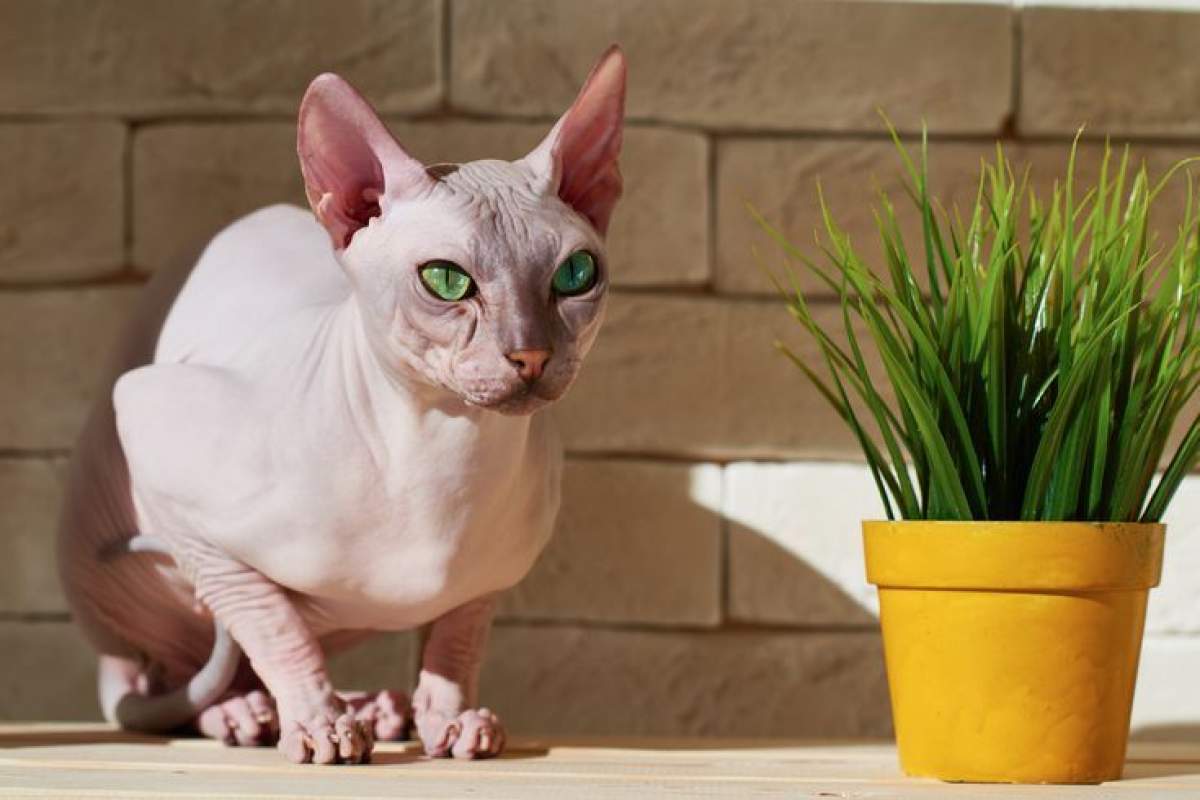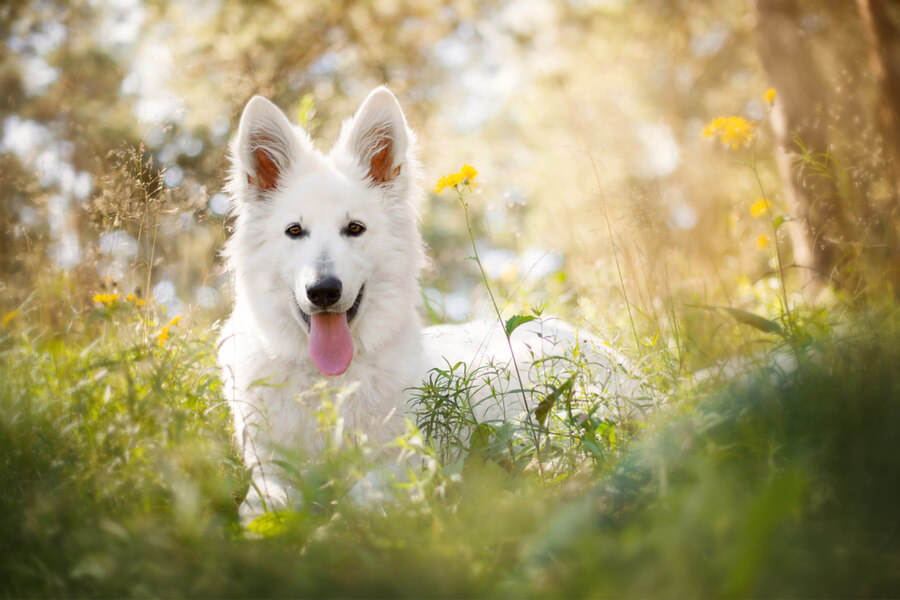Servals and their speckled fur reminiscent of that of big cats are a dream. Unfortunately, wild does not at all rhyme with sedentary lifestyle or domestication. This was without counting the intervention of the man who crossed a serval and a Bengal to create a cat that would bring together the best of two worlds, a dress and a wild appearance, and a docile and demonstrative demeanor. This large cat is the perfect companion for a family with a little outside corner to allow the Savannah cat to work out.
Breed Profile
Physical characteristics of the savannah cat breed
Savannah cat is one of the largest cats in existence today. It can be over 40cm tall and often weighs over 10kg. His musculature is very developed which gives him an impressive stature that sometimes swears a little with the smallness of his head in a triangle. It also has large, tall ears and its almond-shaped eyes vary from green to yellow.
The hair of the Savannah cat has the particularity of being hypoallergenic, this cat is therefore tolerated by people allergic to hair. From his wild ancestors, he kept the dress of a cheetah even though there are black savannahs. Its short coat most often varies between fawn and orange and is studded with small black spots that are also found in cheetahs. Its rather short tail is black at the end.
Reading Suggestion: Boy Cat Names – Find the Perfect Male Kitten Name
What are the character traits of this breed?
The savannah seems to have inherited the best of two worlds: the adaptability and tenderness of domestic cats, and the agility of African wild animals. Bursting with energy, this outstanding hunter can be a bit rowdy and meow to make himself heard.
He acclimated very well to domestic life and does not balk at the rules. Very playful, he is appreciated by children whom he floods with tenderness.
The proverb “like dog and cat” was not invented for him as the savannah gets along well with his canine comrades. Warning ! This is an extremely intelligent and curious cat who will stop at nothing to achieve his goals, expect to see him open doors or turn taps. While it is necessary to keep an eye on him, especially when he’s a kitten, the savannah’s great quick-wittedness makes them easy to train.
How to train your Savannah cat?
The Savannah is an intelligent cat who quickly understands what is taught to him. Despite his wild origins, he has integrated the rules of domestication very well and his background has no impact on his docility. When you decide to adopt a Savannah kitten, make sure that it is well weaned.
Some savannah farms offer animals that are too young which are certainly adorable, but which will be difficult to train. To acquire the autonomy and confidence necessary for a serene and sociable attitude, the kitten must spend enough time with its mother.
Under his cheetah-like appearance, the Savannah kitten is easy to train and his intelligence allows him to quickly understand your instructions. To teach him potty training, take him to his litter box several times a day. Warning ! Make sure her litter box is clean at all times, cats like neat environments. We often recommend sprinkling a few drops of bleach on the litter box, because its smell attracts cats.
When training a Savannah kitten, it is important to accompany and channel the animal rather than trying to tame it. Your cat is going to need to scratch, nibble, climb and jump. Do not just take it back as soon as it attacks your furniture or your knick-knacks and offer it alternatives specially designed for felines, big scratchers, large cat trees, toys and place your precious objects out of his reach so as not to tempt his hunting instincts.
It is this instinct that makes him prone to running away since he will not hesitate to stalk his prey, no matter if it runs away from your garden. It is therefore important to watch it and make sure it does not escape.
It is important that their adopted home understands and accepts their energy and helps them spend their daily life by interacting with them. A full member of your family, he expects you to play with him, and be affectionate towards him. It accepts the leash well, so do not hesitate to bring it with you during your long walks outside.
Savannah cat food
The Savannah cat is a very muscular cat full of energy that needs to let off steam every day. He, therefore, needs a caloric diet adapted to his morphology and his energy expenditure. Opt for protein kibbles rich in fatty acids, specially designed for hyperactive cats, and which contain all the nutrients your pet needs every day.
Reading Suggestion: British Longhair
How to take care of the health of your savannah?
Robust, the Savannah cat does not need too much maintenance. Be sure to brush it weekly to remove dead hair. This will prevent him from ingesting them and risking intestinal obstruction. Offer him food supplements or a specially adapted herbarium to allow him to purge regularly.
It is essential for this hunter to have healthy teeth. So pay attention to his fangs and gums and if in doubt, consult a veterinarian. We also recommend descaling once a year by a professional.
Also watch its ears and eyes, these areas are particularly sensitive in felines, because they tend to get dirty quickly and impair their vision and hearing.
Even if it is not very common with felines, this little fawn loves water, so do not hesitate to give it a bath from time to time.
Diseases of savannah cat
The Savannah is a robust cat that does not suffer from any particular hereditary disease. Presumably the youth of his species (he appeared in the late 1980s) has yet to provide savannah breeding owners the opportunity to mass reproduce sick subjects.
As the Savannah cat tends to snort outdoors and to beat the countryside on the lookout for its prey, it is essential to have it vaccinated, especially against rabies. The injection must take place as soon as it is no longer protected by breast milk, that is to say between 6 and 9 weeks of life.
Besides rabies, it is important to guard against cat typhus, a generally fatal bowel disease, coryza, a disease of the respiratory tract and leukosis, a disease that affects the immune system. All of these diseases are extremely contagious and the vaccine remains the only effective way to prevent them.
Even if there are no symptoms, it is important to have a check-up with your veterinarian once a year.
Anecdotes about the Savannah
The first individuals were born in 1986 thanks to the American breeder Judee Frank who, seeking to create a large domestic cat, crossed a serval – a small fawn with the appearance of a cheetah – and a Bengal. If the result is conclusive, only third generation individuals have reached a level of domestication sufficient to be “adaptable” to traditional human family life.
The mating of a serval and a domestic cat remains difficult. There are therefore very few individuals resulting from this precise crossing. Although it is not yet fully suitable for living in a sedentary environment.
The closer the generation of savannah is to the original cross, the larger the individuals. The Savannah cat also holds the world record for size thanks to one of his F1 cars which measured 43 cm at the withers.
savannah cat breed is still not very widespread in Europe and was only recognized in France in 2002.
In conclusion, under its wild air, hides an adorable pet cat who has energy to spare. This big feline inherited the best from his two ancestors: from Bengal, we find docility, affection and tenderness and from Serval, a small African beast, we find great agility.
This intelligent cat understands the instructions, but sometimes seems to do as he pleases. It’s not that he’s stubborn or rowdy, it’s just that his instincts make him a formidable hunter who doesn’t always resist the call from the outside. It is therefore important to offer him a living environment that will allow him to let off steam.
This cat does not need a lot of maintenance, but does require an adapted diet: it expends itself a lot and must eat accordingly. Highly nutritious croquettes are therefore recommended.


